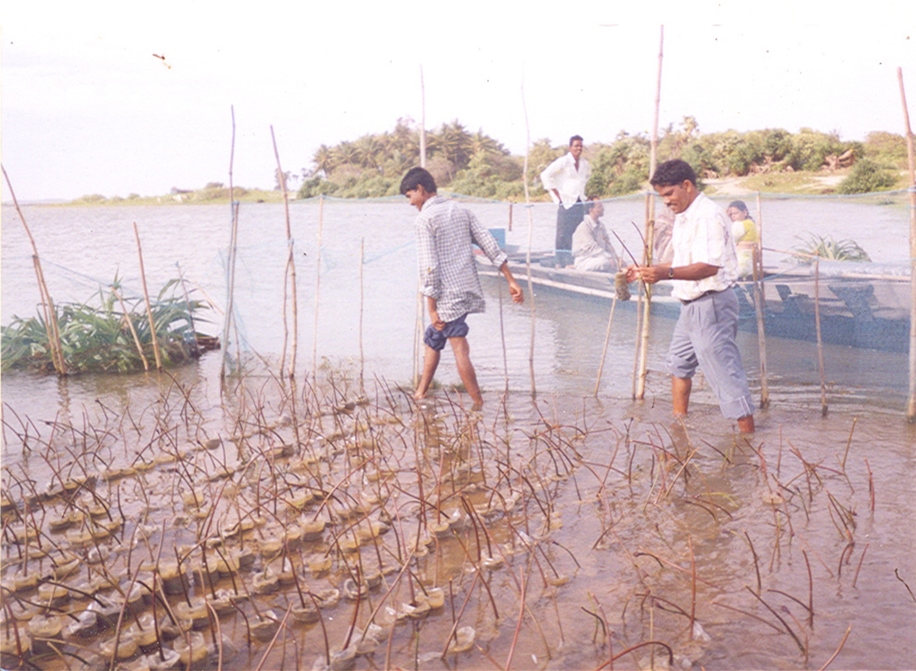Chilika Lake is Asia’s largest brackish lagoon. The lake has a rich fishery and is the largest wintering ground for migratory waterfowl on the subcontinent, making it a favored destination for many birdwatchers. It is home to many rare and endangered species, including the Irrawaddy dolphin, green sea turtle, spoon-billed sandpiper, fishing cat, and limbless skink.
The Kyabart community on the 766-acre island of Mainsh has no electricity, and its inhabitants subsist by fishing collectively. With the assistance of the local organization Jeevan Rekhan Parishad, Seacology will provide funding for 170 toilets for the village. As well, Seacology will provide 40,000 mangrove seedlings, which the villagers will plant in a three-kilometer belt around the island.






